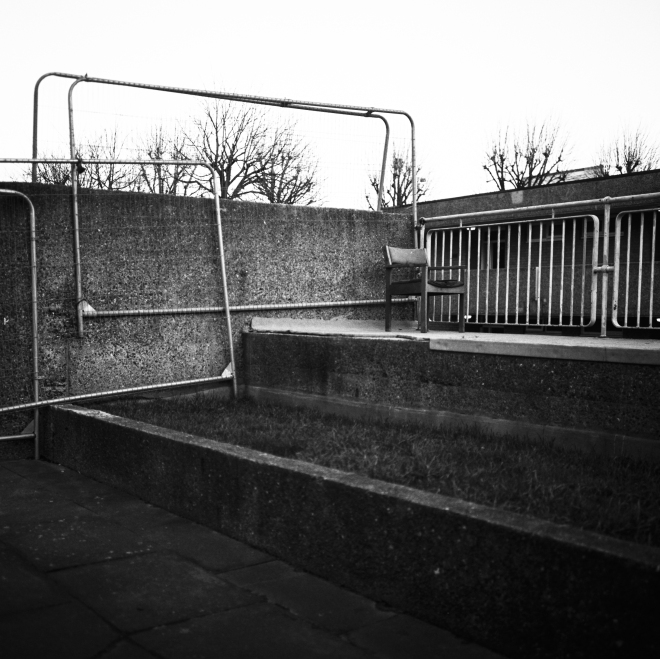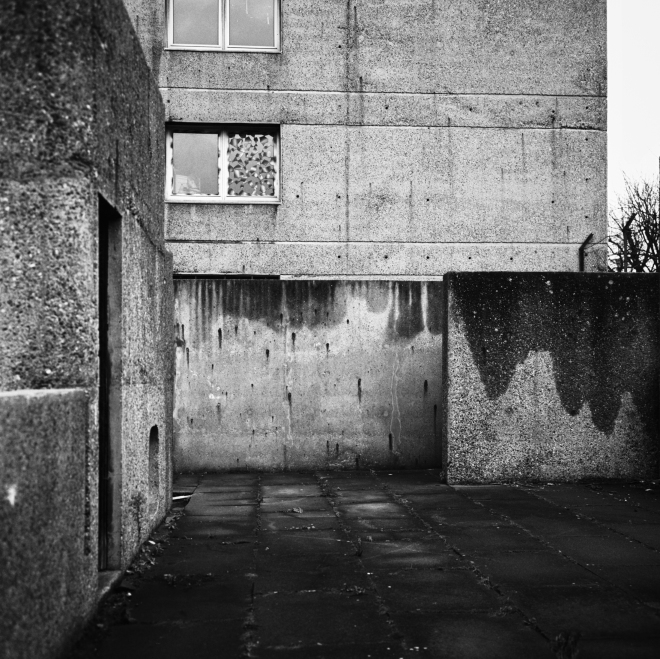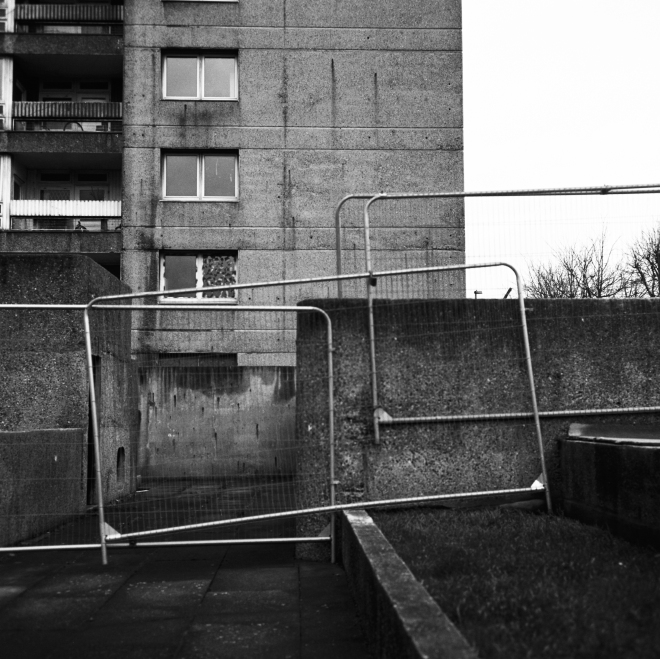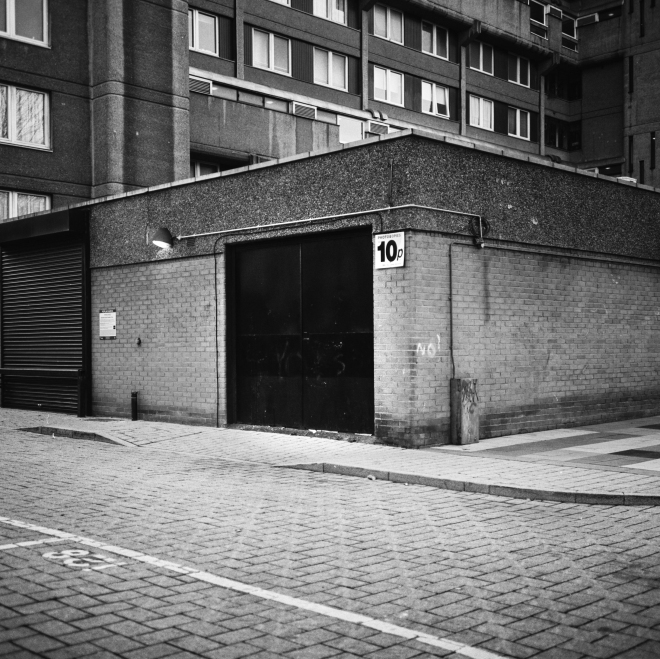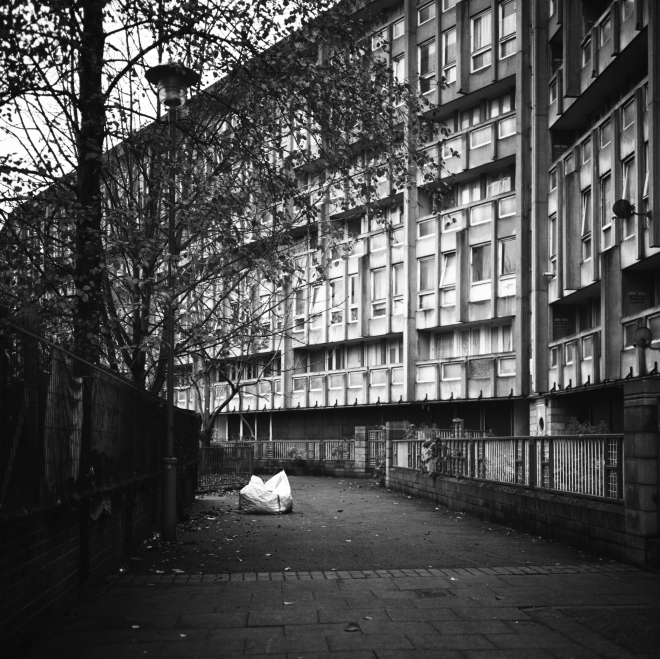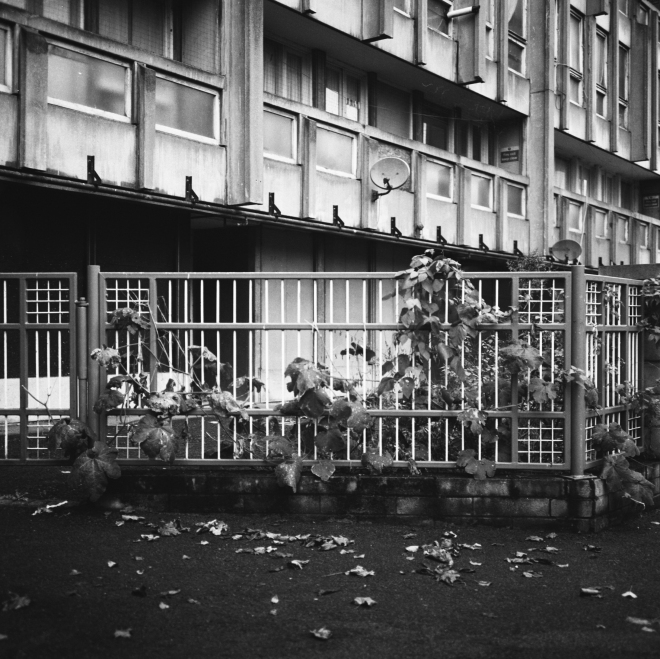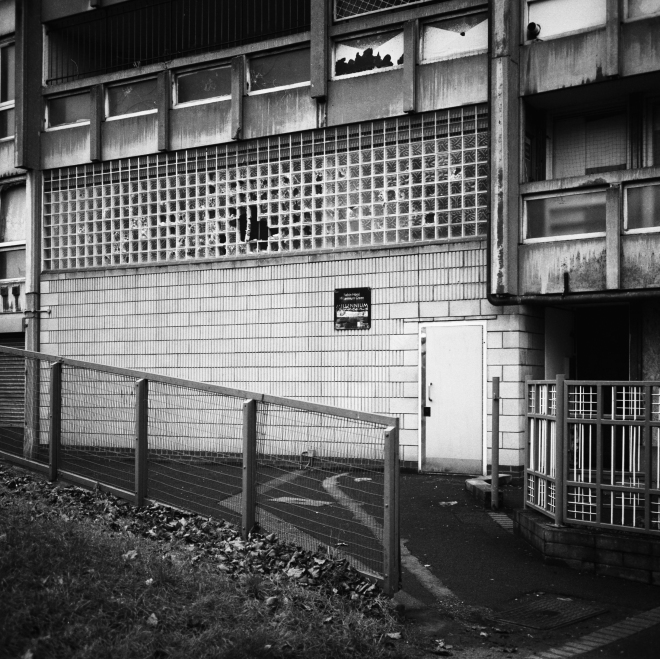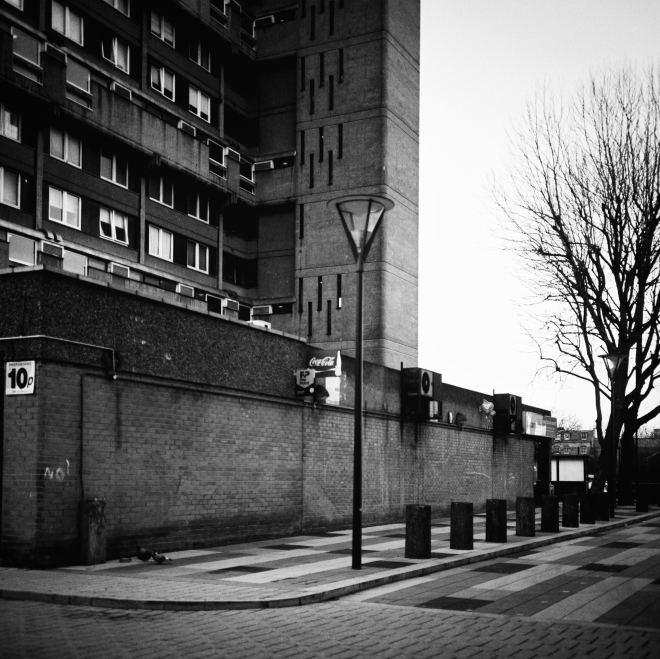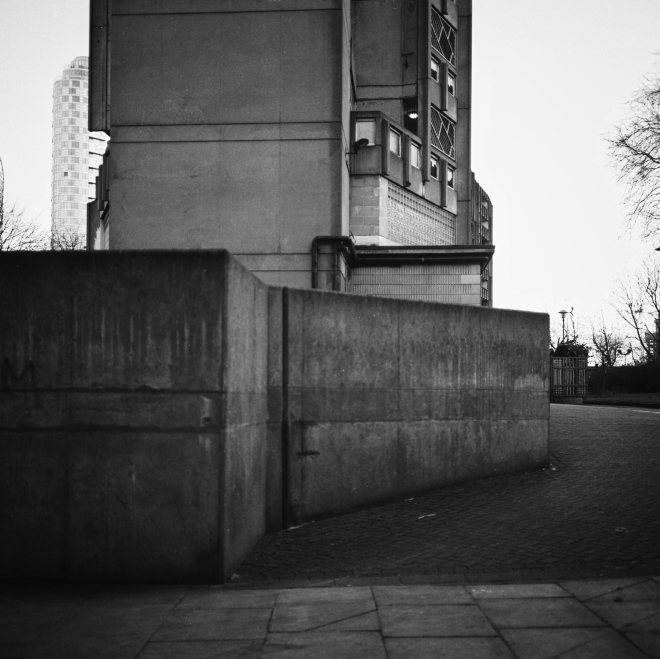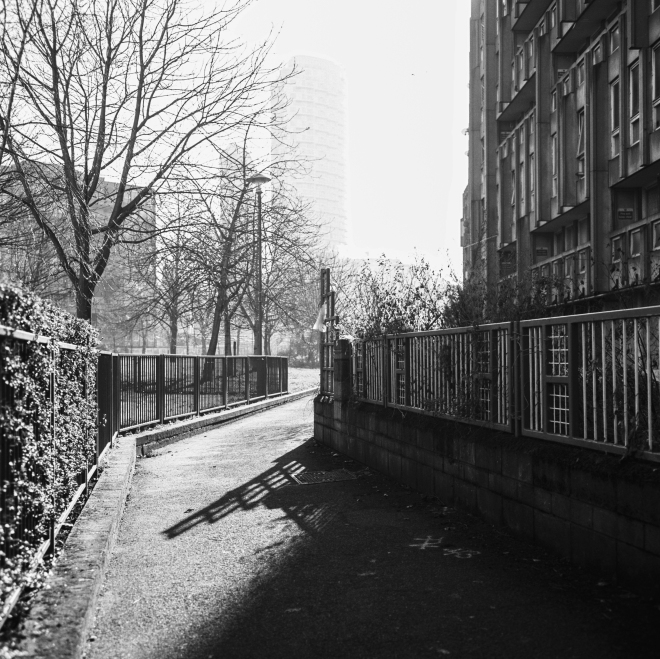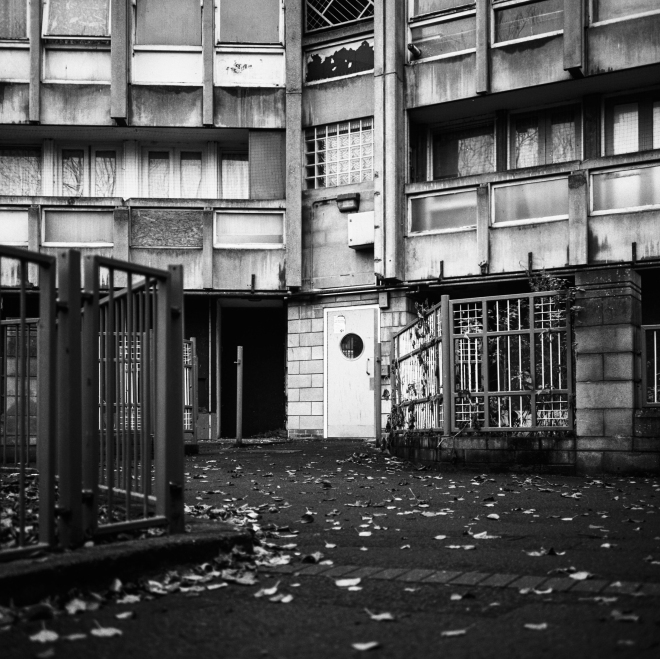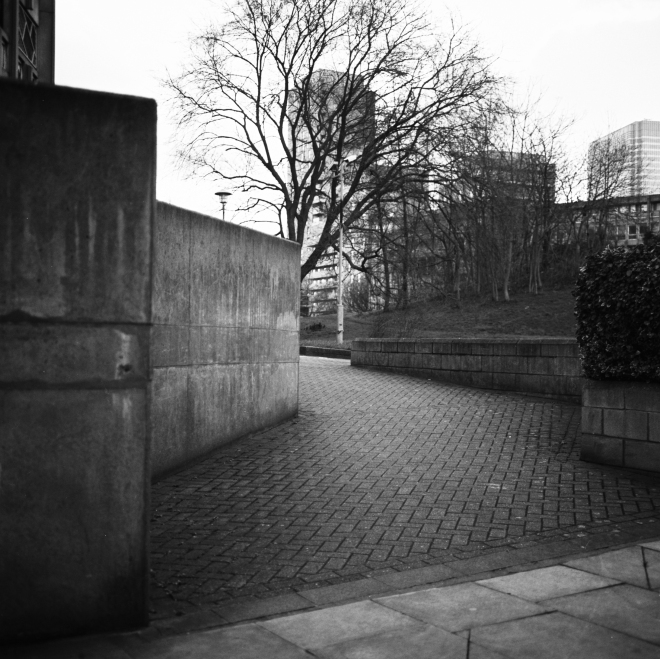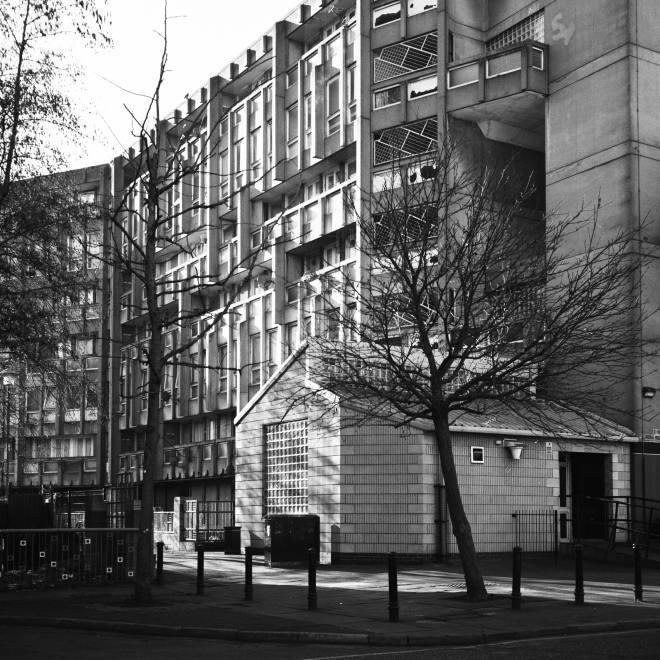As part of my research for the final assignment, I have been taking my camera around areas of London and taking the observational approach I adopted for Brixton in the previous assignment. I have opted to research around Poplar in the East End, Elephant and Castle, Ladbroke Grove and areas in the City. These areas all contain modernist housing estates, the majority built in the post-war period in order to house those made homeless from bombing.
What is interesting about these estates are the ideas of community they represent, ideas that drove the 1960s urban planners to completely reimagine British cities. Prestige projects such as the Golden Lane estate in the City divide opinion but are popular enough to have listed status. The less refined architecture of inner city estates, such as Robin Hood Gardens in Poplar, are derided and often dismissed as ‘sink estates’.
What is unclear is why these places began to be perceived as harsh places of social collapse. One idea that I have been interested in pursuing is reimagining these places through a set of images that examine an estate in London (or a number of estates). I am not sure if I will be focusing on one estate, although it would perhaps provide more focus to the project if I focused on a single estate and its surrounding area. Linking back to my research on ‘deadpan’ and the ‘new topographics’ (see previous posts), I would like to present detached, observational images of these areas/estates that are an appraisal of their meaning to the people who inhabit them, and also to some degree the wider city. What my images may show is at this stage not completely determined and hinges in part on what I may observe, but the images of Poplar (see below) hopefully give some idea of what the final set may look like.
So far I have shot at Robin Hood Gardens and the Balfron estate in Poplar, the Golden Lane Estate in the City, and also at Trellick Tower in Ladbroke Grove. I have both colour and monochrome images, which I will subsequently edit and post in sets when completed. I also plan to have a look at the Brunswick centre near Russell Square and perhaps if I have time have a walk around the Thamesmead area, so I will be adding further sets over the next 2-3 weeks. I also have some images shot in Elephant and Castle, particularly around the regeneration project going on at Elephant Park and the Goldfinger designed modernist housing on the roundabout.
The set below has been shot over a period of 1-2 months in Poplar at Balfron tower and Robin Hood Gardens. The former is listed and the latter has been earmarked for demolition. It has been interesting to walk around Poplar as it is a very diverse area culturally and in terms of its architecture, however I feel including both estates in a set and focusing on the area as a whole lacks focus. I have therefore focused more on the Robin Hood Gardens estate (see next post) and have decided it is better to focus on a smaller area for a series of 12 images.
The images have potential, and the square format and Ilford film certainly convey a sense of the architectural facade and general grittiness of the area. My main doubt though is how much the images reveal to the viewer of the people who live in Poplar? Are they architecture photos? This is something to bare in mind when shooting and cutting the photos into a set.
(Technique: TLR camera and Ilford PanF film, mostly shot at 1/125 – 1/500 from F/3.5 – F/8)
